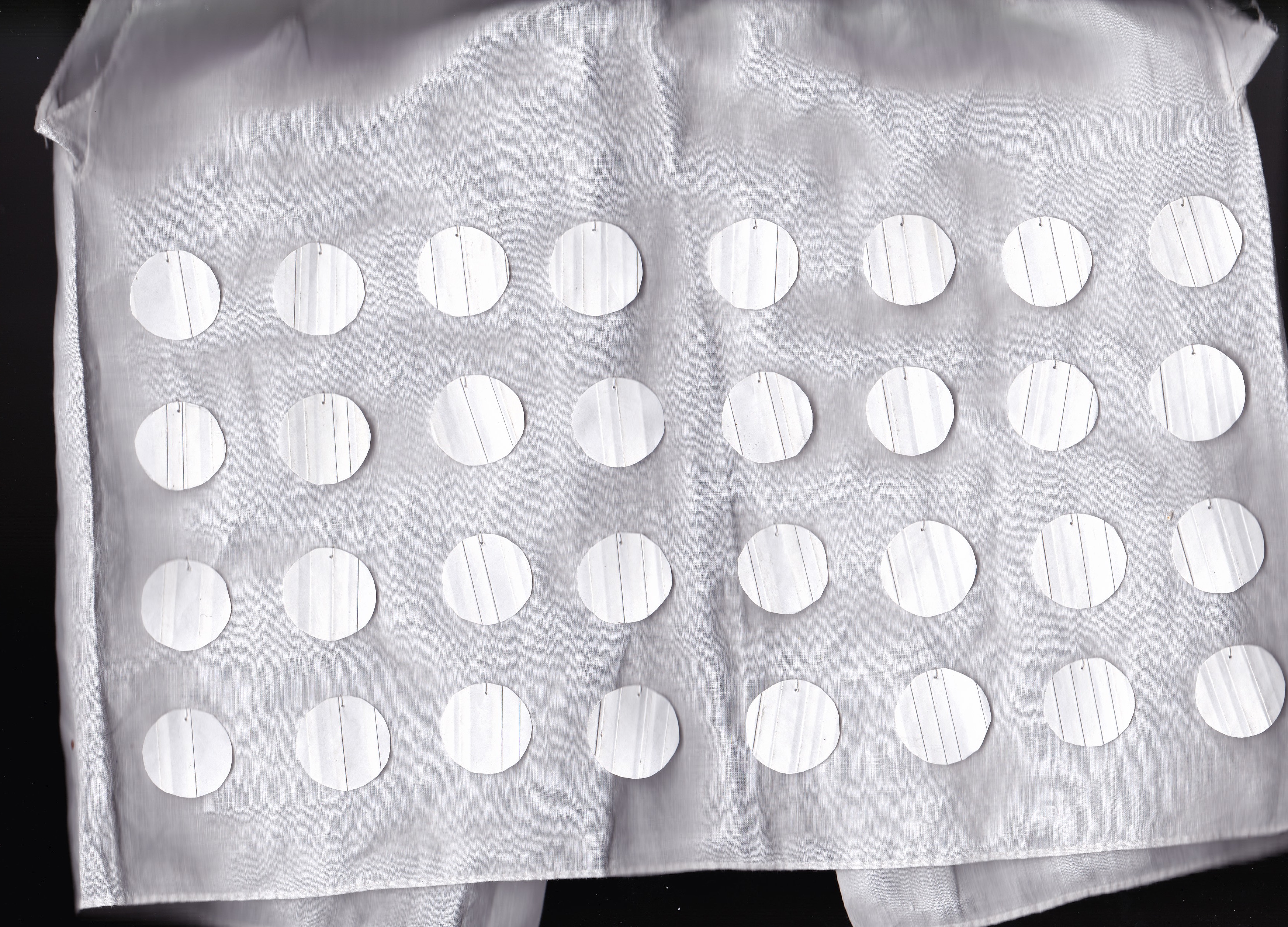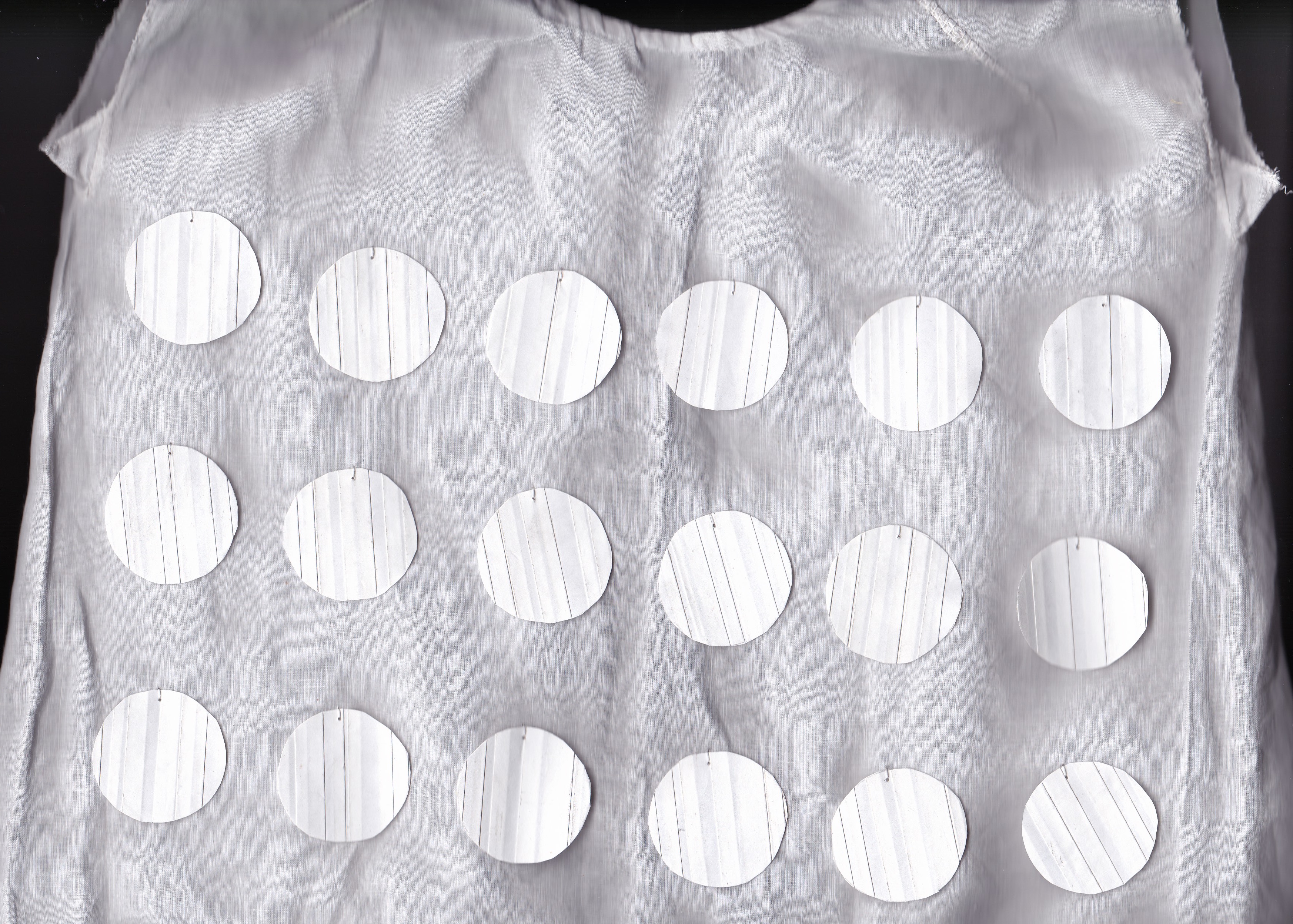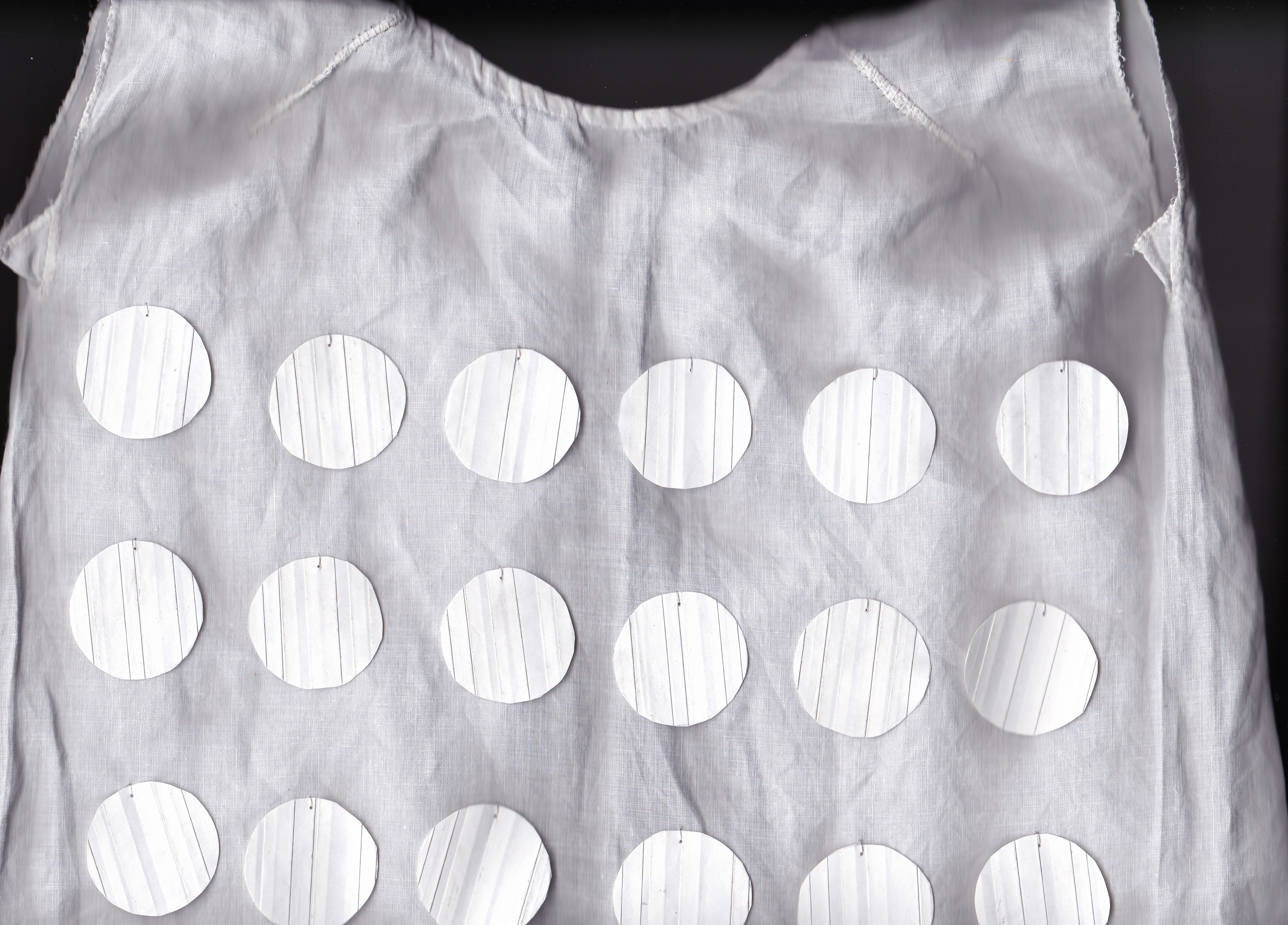



Images of two garments, equal in size, with crafted disks attached. Circles seem to be a recurring motif in a number of articles found on the Lye Planet. These are the only ones discovered that integrate parallel lines into the design.
a curve yet, and how much care
in the bundles carrying, picking up, laying down
a place out of the way
away and long since not yet green
a higher place, not far
but out of the corner of an eye. it was said:
these fine feelings
are not enough. you have made two
where one was
more than enough – two breathing bowls.
lay one down easy
for the rain to fill it, overspill and find
the earth kinder;
love is a cloth, a [ ]
and also a pile of grain
so take it up and give it half away.
but for the curling
of their hands, I can't, for these two
held however briefly
folded, however fallen from the tree
It is a sad duty for a researcher in any organisation to criticise the methods of her predecessor; nevertheless, it is inarguable that the methods (or lack thereof) used by the expedition team which discovered the artefacts at Lye Planet Site 3.1 (‘Wolf’s Head’) have resulted in significant difficulties for the subsequent study. As appears to have been usual practice during this first expedition to the Lye Planet, scans were taken of the artefacts as they lay in the preservative vat in which they were first discovered. However, upon being removed from the vat back on Earth, and exposed to a disastrously uncontrolled laboratory environment, the garments disintegrated to the point of unrecognisability.
However, the scans and sparse notes that remain from this first expedition make it possible for us to glean some information. From the notes we learn that LPS 3.1 was located more than two days’ journey on foot from the location of the discoveries detailed by K. Leonard in “Unwritten Virtues”. It appears that the team were curious to visit the singular seeming geological formation of the site, as visible in aerial photos. The rock formation stands at about 15ft high; from one’s vantage point at its summit, the surrounding plain extends undifferentiatedly out of sight. No structures for habitation can be found within a 20 mile radius, nor any signs of cultivation.
However, atop the formation itself, a preservative vat was found, and in it the text and two garments presented above. Alongside the vat was a shallow oval hollow in the rock, apparently created through purposive action, since there remained traces of circular marks, as one might make with a pestle when grinding spices. The exact nature of this hollow and of the artefacts is impossible to determine for certain, and I believe that it does some disservice to their lonely delicacy to construct too imposing a narrative; I will only offer a few small items of personal speculation.
First, it may be noted that the dimensions of the hollow are similar to the recorded estimates of the dimensions of the garments found in the vats. That is, that a creature wearing one of the garments might fit comfortably into one of the hollows. But why make only one hollow, but two items of clothing? The text also explores this notion of the trouble caused by a mysterious ‘two’, ‘where one was enough’. It was the hypothesis of my predecessor that he had discovered the sparse remains of a family dwelling, in some way troubled by the anxiety inevitably attached to the prospect of reproduction in a climate gradually but inexorably failing to support life.
This hypothesis seems to me, however, to elide an affective atmosphere of what I will call ‘determined hopelessness’ that attaches itself to the site and artefacts at Wolf’s Head. How does one reach such a state of being, in which tiny, repeated actions of ambiguous purpose – grinding, folding, stitching, arranging – become as important as the actions necessary for survival in such a barren and isolated place? Perhaps if we knew, we might know then ‘like water how to balance / the weight of hope against the light of patience’ (Alice Oswald, A Short Story of Falling).
A final note on the text above: the translation here presented is my own. Work on the intricacies and often apparently intractable problems of translating the languages of the Lye Planet is ongoing, such that this effort is offered only as some kind of ‘placeholder’. It hopefully anticipates translations which are able to engage more fully with the complex mythologies, customs and philosophies of the Lye Planet communities. The square brackets mark a space which I found myself unable to fill; a term in the dialect denoting something akin to shelter – more than home, but less than freedom from fear.
-Dr. Grace Linden
Department of Lye Textiles